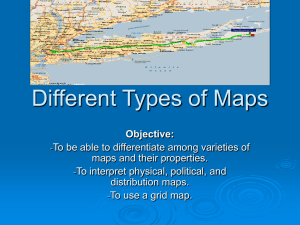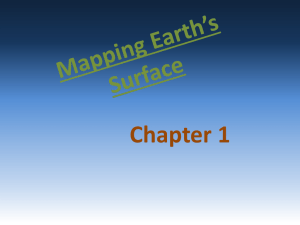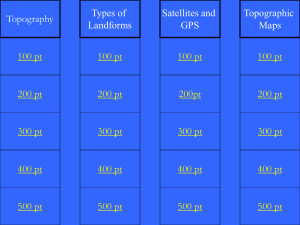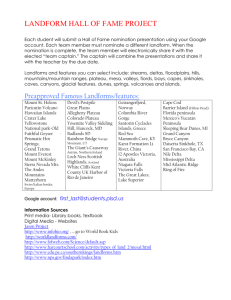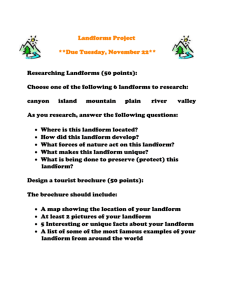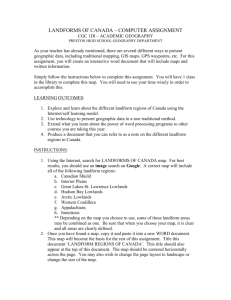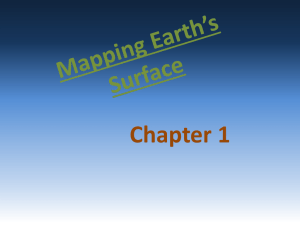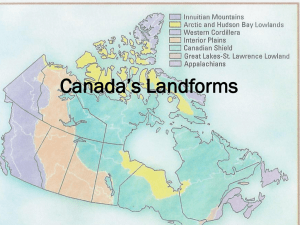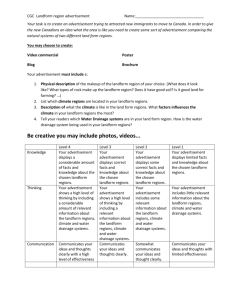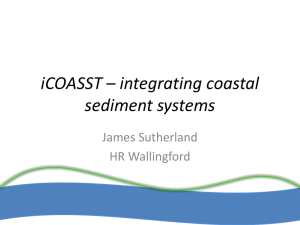CROSS CANADA PROFILE
advertisement
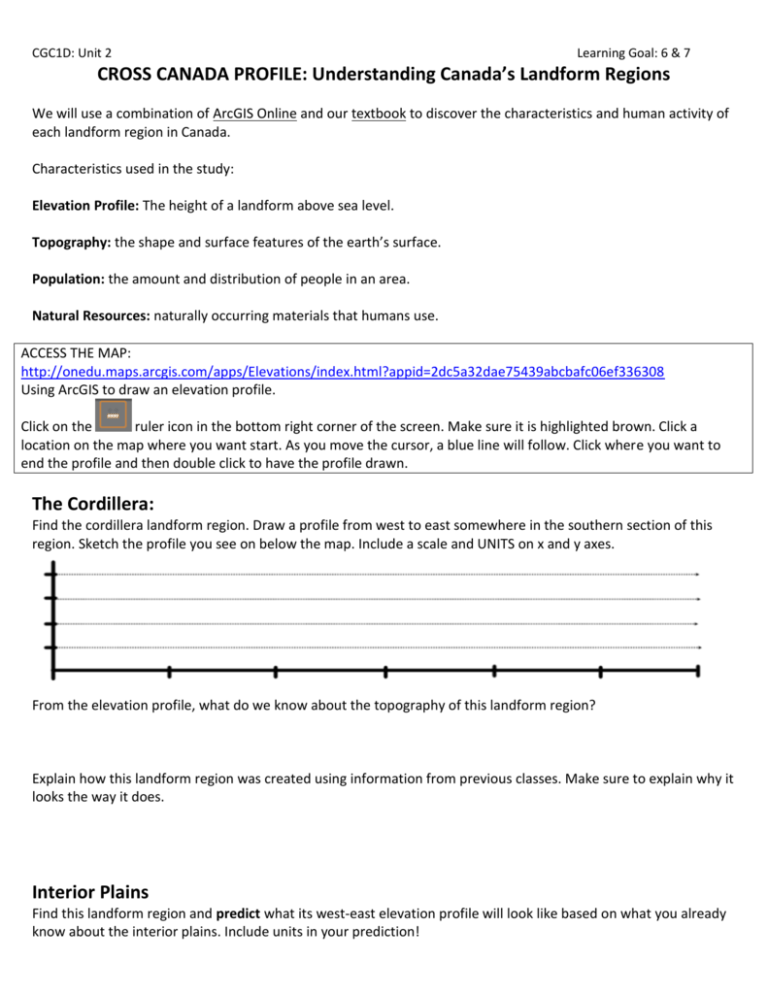
CGC1D: Unit 2 Learning Goal: 6 & 7 CROSS CANADA PROFILE: Understanding Canada’s Landform Regions We will use a combination of ArcGIS Online and our textbook to discover the characteristics and human activity of each landform region in Canada. Characteristics used in the study: Elevation Profile: The height of a landform above sea level. Topography: the shape and surface features of the earth’s surface. Population: the amount and distribution of people in an area. Natural Resources: naturally occurring materials that humans use. ACCESS THE MAP: http://onedu.maps.arcgis.com/apps/Elevations/index.html?appid=2dc5a32dae75439abcbafc06ef336308 Using ArcGIS to draw an elevation profile. Click on the ruler icon in the bottom right corner of the screen. Make sure it is highlighted brown. Click a location on the map where you want start. As you move the cursor, a blue line will follow. Click where you want to end the profile and then double click to have the profile drawn. The Cordillera: Find the cordillera landform region. Draw a profile from west to east somewhere in the southern section of this region. Sketch the profile you see on below the map. Include a scale and UNITS on x and y axes. From the elevation profile, what do we know about the topography of this landform region? Explain how this landform region was created using information from previous classes. Make sure to explain why it looks the way it does. Interior Plains Find this landform region and predict what its west-east elevation profile will look like based on what you already know about the interior plains. Include units in your prediction! CGC1D: Unit 2 Learning Goal: 6 & 7 Draw a profile from west to east somewhere in the southern section of this region. Sketch the profile you see below the map. Include the UNITS on x and y axes. How did your prediction compare to the actual profile? What is the topography of the interior plains like? Explain how this landform region was created using information from previous classes. Make sure to explain why it looks the way it does. Canadian Shield: Draw a profile from west to east somewhere in the southern section of this region. Sketch the profile you see on below the map. Include the UNITS on x and y axes. From the elevation profile, what do we know about the topography of this landform region? Explain how this landform region was created using information from previous classes. Make sure to explain why it looks the way it does. CGC1D: Unit 2 Learning Goal: 6 & 7 Appalachian: Find this landform region and predict what its west-east elevation profile will look like based on what you already know about the interior plains. Include units in your prediction! Draw a profile from west to east somewhere in this region. Sketch the profile you see below the map. Include the UNITS on x and y axes. How did your prediction compare to the actual profile? Compare the topography of the Appalachians to the Cordillera. Include similarities and differences. Hudson Bay Lowlands Draw a profile somewhere in this region. Sketch the profile you see below the map. Include the UNITS on x and y axes. How does the elevation of this region relate to sea level? Great Lakes/ St. Lawrence Lowlands Draw a profile somewhere in this region. Sketch the profile you see below the map. Include the UNITS on x and y axes. CGC1D: Unit 2 Learning Goal: 6 & 7 How does the elevation of this region relate to sea level? Arctic/Sub Arctic Draw a profile in this region that covers it west to east. Sketch the profile you see below the map. Include the UNITS on x and y axes. Canada’s arctic landscape is quite diverse. Look at the map on page 50 in your textbook and describe the diversity it possesses. CONSOLIDATION: Canada’s 7 landform regions can be grouped into 3 different types. Highlands Lowlands TEXTBOOK: pages 50-53 Canadian Shield Landform Regions that are Highlands: Landform regions that are lowlands Landform regions that are shield. Human activity in Highlands: Human Activity in lowlands: Human activity on the shield: Which of Canada’s landform regions would you want to live in? Why?

